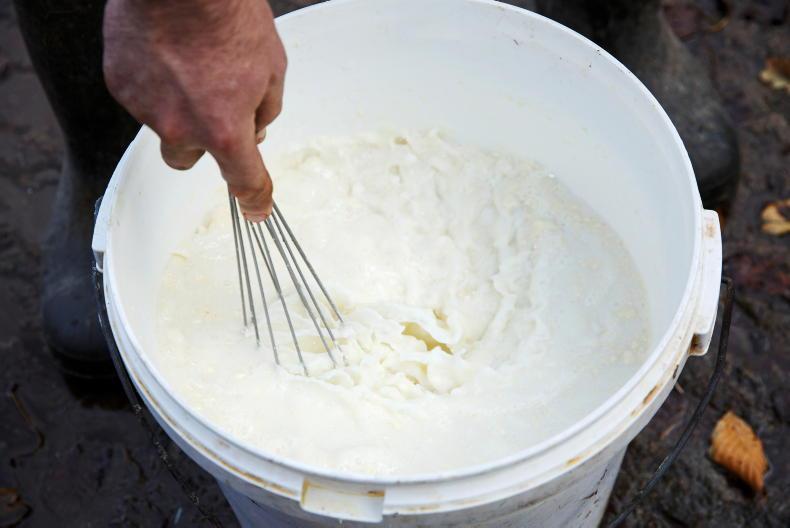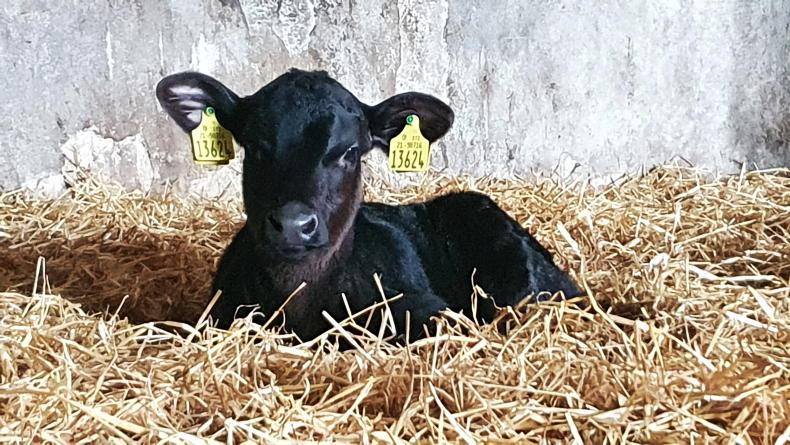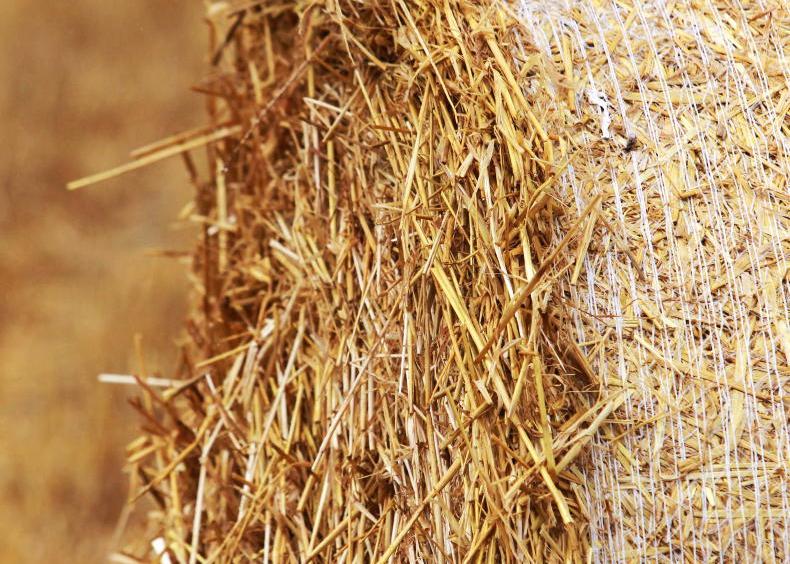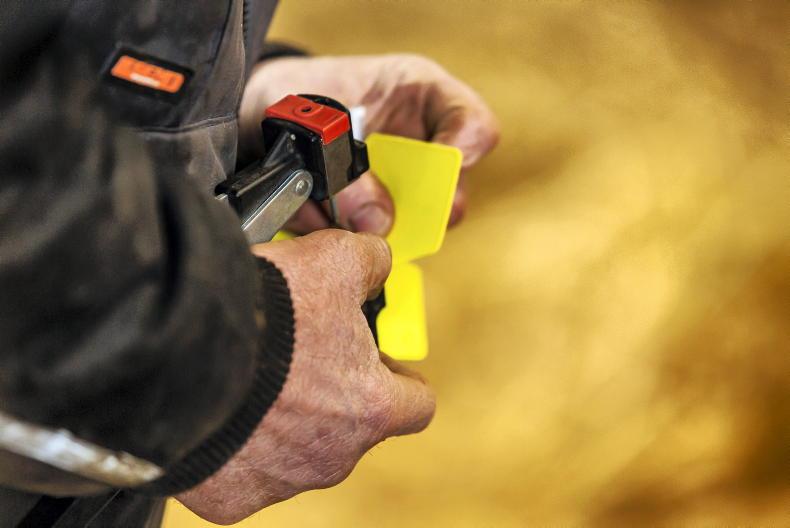There are few more important jobs on any farm than rearing young calves. The fact that this is a job very often passed on to younger farmers is even more significant. There are three reasons for this – firstly, it fits in with the school schedule, as calves can be fed before and after school. Secondly, younger people have the attention to detail regarding feeding the correct amounts of milk. Finally, younger people are good at spotting a calf that is off form.
Let’s take a look at some of the common advice younger farmers hear when it comes to calf rearing and examine if they are still relevant today.
Don’t kill the calf with kindness
Consistency is key when it comes to calf rearing – just because it’s a Sunday, a holy day or the calf’s 21-days-old birthday, doesn’t mean that it should get an extra bit of milk. This is especially true when it comes to mixing milk replacer, as adding more milk replacer to the mix can cause very serious digestive problems to the calf.
Some people used to think that giving too much milk to calves means that they are more likely to get scour, but this isn’t the case, as many calves can tolerate a high feeding rate once it is consistent. Scour is usually as a result of an infection such as a parasite or virus, which is why hygiene is so important.

Consistency around the mixing of milk replacer is key.
Remember the steps involved when mixing milk replacer – add the powder to half the amount of water required using a clean scoop and mix this with a clean whisk. When the powder is mixed and there are no lumps remaining, add the rest of the water, give it one more stir and then it is ready to feed to the calves.
Milk replacer should never be added to piping hot water, as this could damage some of the ingredients. Don’t forget to wash all the utensils and the feeders after each feed and leave them to dry before using them again.
A good bed is half the rearing
This is an old saying, but it is very true and is certainly standing the test of time. A good bed of straw under calves will give them heat and comfort and help them to grow and thrive. The best way to judge how good the bed is, is to kneel on it yourself. If moisture starts soaking into your trousers, then it needs changing.
A dry bed by itself isn’t the be-all and end-all either. Teagasc researchers are now looking at something called a ‘nesting score’ when it comes to assessing the quality of the bedding.
Take a look at calves that are lying down in the pen. A nesting score of one is where the calf is resting on top with their legs exposed.

This calf has a nesting score of three, which is ideal.
A nesting score of two is where the calf is nestled into bedding with part of the legs exposed.
A nesting score of three is the ideal and this is where the calf is nestled deeply in bedding with their legs not visible because they are covered by straw. A nesting score of three is particularly important for very young calves.
The day you buy is the day you sell
This is a saying that warns farmers about the danger of paying too much money for stock. If they pay too much when buying the animal, they won’t be able to make money on the animal on the day that they sell it. This is very true when it comes to buying calves. Knowing how much to spend on a calf and sticking to that principle is very important.
We know that beef prices are good at the moment, but it will be two years before the calves born this spring are turned into beef, and who knows what the price will be then.
There is more to assessing the value of an animal than just size, age, colour or breed. The genetic merit of the beef calf in terms of commercial beef value (CBV) is also important, but so too is the health of the calf. If you know that the calf has got sufficient colostrum at birth, then that is worth a lot also.
There are few more important jobs on any farm than rearing young calves. The fact that this is a job very often passed on to younger farmers is even more significant. There are three reasons for this – firstly, it fits in with the school schedule, as calves can be fed before and after school. Secondly, younger people have the attention to detail regarding feeding the correct amounts of milk. Finally, younger people are good at spotting a calf that is off form.
Let’s take a look at some of the common advice younger farmers hear when it comes to calf rearing and examine if they are still relevant today.
Don’t kill the calf with kindness
Consistency is key when it comes to calf rearing – just because it’s a Sunday, a holy day or the calf’s 21-days-old birthday, doesn’t mean that it should get an extra bit of milk. This is especially true when it comes to mixing milk replacer, as adding more milk replacer to the mix can cause very serious digestive problems to the calf.
Some people used to think that giving too much milk to calves means that they are more likely to get scour, but this isn’t the case, as many calves can tolerate a high feeding rate once it is consistent. Scour is usually as a result of an infection such as a parasite or virus, which is why hygiene is so important.

Consistency around the mixing of milk replacer is key.
Remember the steps involved when mixing milk replacer – add the powder to half the amount of water required using a clean scoop and mix this with a clean whisk. When the powder is mixed and there are no lumps remaining, add the rest of the water, give it one more stir and then it is ready to feed to the calves.
Milk replacer should never be added to piping hot water, as this could damage some of the ingredients. Don’t forget to wash all the utensils and the feeders after each feed and leave them to dry before using them again.
A good bed is half the rearing
This is an old saying, but it is very true and is certainly standing the test of time. A good bed of straw under calves will give them heat and comfort and help them to grow and thrive. The best way to judge how good the bed is, is to kneel on it yourself. If moisture starts soaking into your trousers, then it needs changing.
A dry bed by itself isn’t the be-all and end-all either. Teagasc researchers are now looking at something called a ‘nesting score’ when it comes to assessing the quality of the bedding.
Take a look at calves that are lying down in the pen. A nesting score of one is where the calf is resting on top with their legs exposed.

This calf has a nesting score of three, which is ideal.
A nesting score of two is where the calf is nestled into bedding with part of the legs exposed.
A nesting score of three is the ideal and this is where the calf is nestled deeply in bedding with their legs not visible because they are covered by straw. A nesting score of three is particularly important for very young calves.
The day you buy is the day you sell
This is a saying that warns farmers about the danger of paying too much money for stock. If they pay too much when buying the animal, they won’t be able to make money on the animal on the day that they sell it. This is very true when it comes to buying calves. Knowing how much to spend on a calf and sticking to that principle is very important.
We know that beef prices are good at the moment, but it will be two years before the calves born this spring are turned into beef, and who knows what the price will be then.
There is more to assessing the value of an animal than just size, age, colour or breed. The genetic merit of the beef calf in terms of commercial beef value (CBV) is also important, but so too is the health of the calf. If you know that the calf has got sufficient colostrum at birth, then that is worth a lot also.











SHARING OPTIONS